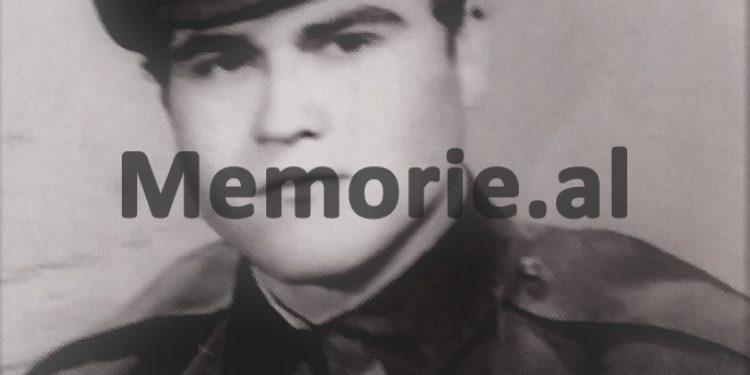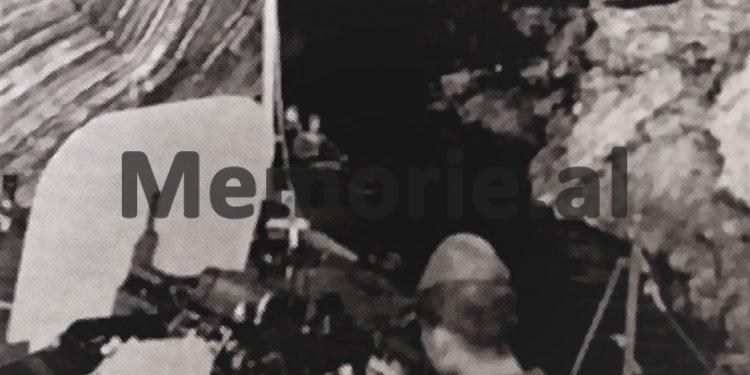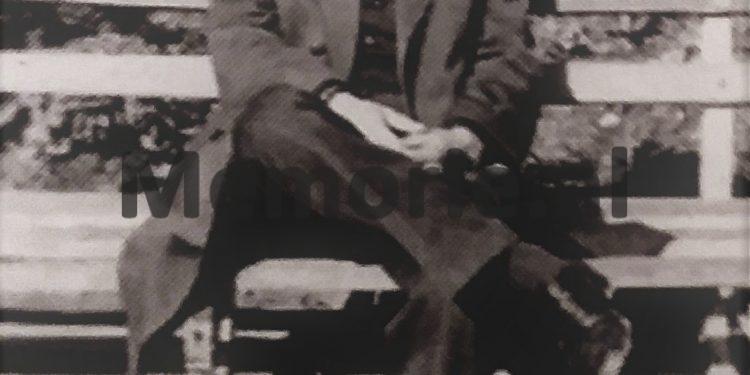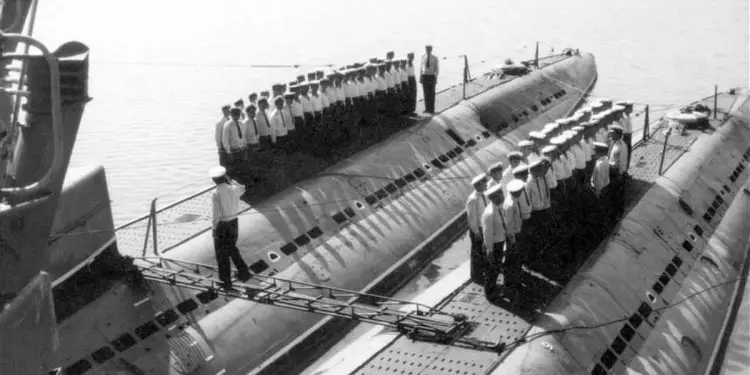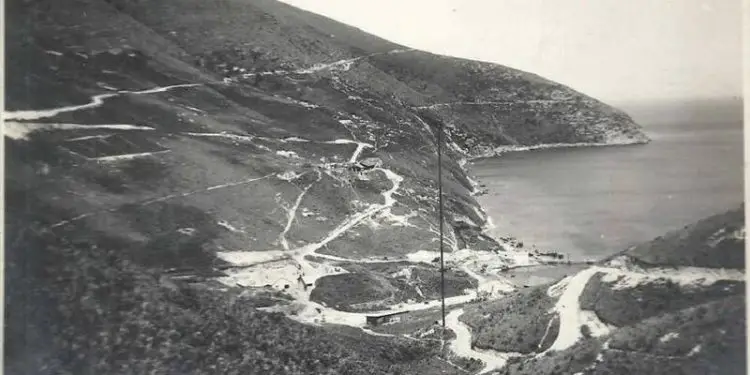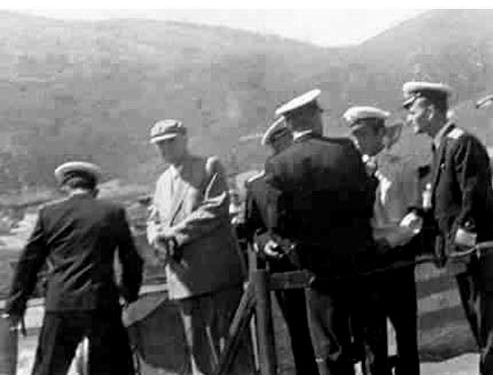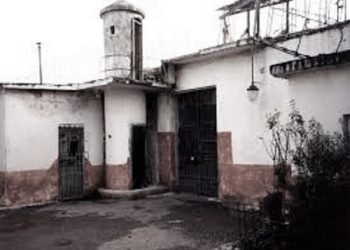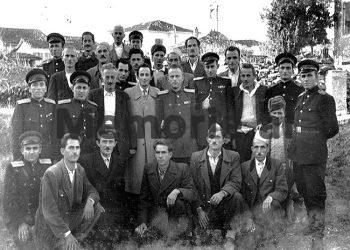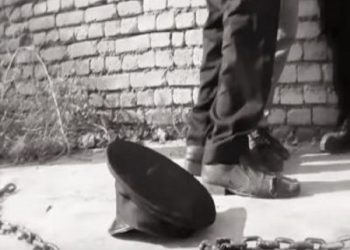Dashnor Kaloçi
Memorie.al publishes the unknown story that happened at midnight on October 21, 1981, when one of the military units of the ‘Coastal Battery’ deployed in the Bay of Vlora, reported that in the Albanian territorial waters, not far from Cape Gjuhza, had discovered the periscope of an “enemy object” and after that by order of the Naval Fleet Command at the Ministry of Defense in Tirana, all military units and those of the Navy deployed throughout the Gulf of Vlora were put on alert. Rare testimony of Mahmut Lazri, former Chief of Liaison at Sazan Island Command, regarding the reconnaissance order given to the Sazan Regiment that had three squadrons available: (‘Four torpedoes’, two ‘Marine Shooters’) and two ‘Dragamina’) which he took to the high seas inland of the Gulf of Vlora to fulfill his combat duty under the orders of the island’s commander, Tasim Meçe. How and why the operation to hit and destroy the “ghost ship” failed after the order to open fire on it was communicated by the Ministry of Defense, an order which had the right to be given only by the Commander-in-Chief of the Armed Forces, Enver Hoxha, after first approving it in the Defense Council! What did the several months of investigations carried out by the General Prosecutor’s Office and the Military Investigation reveal about that event which to this day continues to be the subject of debates between ex-servicemen who took part in that military operation and whether was Kadri Hazbiu really implicated with that ‘incident’, as Enver Hoxha would accuse him shortly after his arrest?!
“Around 10.20 am, the naval fighter, who had received orders to keep the foreign enemy submarine under control, asked permission to open fire on it. This request that came from that ship that had over 20 sailors on board and that was commanded by Commissioner Petro Kadëna, I reported to the Operation of the island of Sazan, which was also our superior command. At that time, Tasim Meçe, who was the general commander of the island, took command of the operational situation of the war situation, after the news that a foreign submarine had entered the interior of the Gulf of Vlora. After my reporting, the request of the shooter to open fire, the Island Operative, reported to the Operative of the Ministry of Defense, who contacted directly with Minister Kadri Hazbiu and presented it. After that, from the Operation of the Ministry of Defense via radio signal, we received the order: ‘Open fire, destroy the submarine’. This order was given to the Island Command by telephone by the Ministry Operative, while its Operative was given to me by radio signal. From the moment the ‘naval fighter’ asked for permission to open fire on the foreign submarine, it did not take more than seven minutes to receive the order, which approved it. The order to open fire on the foreign submarine which was considered hostile and which had flagrantly violated the territorial waters of the Socialist People’s Republic of Albania, according to all military regulations available to the Albanian army at that time, was given directly by Enver Hoxha. I say this because no one other than Commander-in-Chief Enver Hoxha had the authority to issue that order, and he had to do so only with the approval of the Defense Council. ”
The man who speaks and testifies for the first time for Memorie.al, is Mahmut Lazri, ex-military for more than three decades, of which 13 years (1976-1988) he spent with service on the island of Sazan, with the duty of the head of the Liaison Center, near the command of that island, who for the first time made public that distant event of 1981, when a foreign submarine, through the meso-channel located between Sazan and Cape Gjuhza, was enters the interior of the Bay of Vlora. But what was that ship and to whom did it belong, the Soviets or the US 6th Fleet that was then deployed in Mediterranean waters? How could it be inserted between the island of Sazan and Karaburun, without being dictated by the sophisticated equipment available to the Albanian army at that time and in particular the naval districts of the island of Sazan and the famous base of Pasha-liman?! What was the real mission of that submarine that was said to be ‘carrying an atomic cargo on board’ and did it have anything to do with Kadri Hazbi and Mehmet Shehu, who were accused by Enver Hoxha in 1982 when Hazbi was hit, as implicated in that incident ?! How could that submarine escape without being destroyed even after the order to open fire on it, from the six mines thrown by the ‘Dragamina’ of the Sazan Regiment, which had reported that it had all its movements under control? Why that incident was considered the “blackest stain” in the entire history of Sazan Island?
How was the foreign submarine dictated in the Bay of Vlora?
It was 21.00 on the evening of October 21, 1981, when a non-commissioned officer of the ‘Coastal Battery’ of Cape Gjuhëza, who was on duty guarding that ward, spotted with his naked eye a submarine periscope inside the Bay of Vlora. . The distance from the non-commissioned officer’s battery to the submarine’s periscope was no more than 1 nautical mile. After noticing that, which was not an ordinary object, the non-commissioned officer of the ‘Coastal Battery’ immediately contacted the Pasha-Liman Submarine Base Operative and asked him if they had any submarines in sailing inside the Bay of Vlora. The operative who was performing the guard service near the famous base, on the other side of the phone, answered that he did not give an account to a captain. Even after this answer, the non-commissioned officer of the service, driven by the curiosity given to him by the task he had been carrying out for years, did not give up so much, but connected himself by radio with the operative who served at the Fleet Command- Marine, at the Ministry of Defense in Tirana. He signaled the Ministry Operative, saying that: near the ‘Coastal Battery’ of Cape Gjuhza, he had noticed a submarine periscope. Following this signal, the Operative of the Ministry, raised the war alarm, the Regiment of submarines, which was deployed on the island of Sazan. After the alarm of the ship regiment, around 24.00, the submarine disappeared from the observation and its periscope was no longer visible. But what was that submarine and how could it have entered without being dictated by the location radars, to the interior of the Bay of Vlora, which at that time was equipped with all the most modern weapons and equipment available to the Albanian army?
Submarine, Soviet or American?
In this regard, Mahmut Lazri, former military and head of the Liaison Center at the Group Command on the island of Sazan, testifies: Vlora, it was almost very difficult. This was related to many technical problems. The sinking of the submarine, immediately after the alarming of the Sazan regiment of ships, brought us many doubts. If it was a Soviet submarine, its sinking would not have the technical possibilities to take place, as a submarine of that fleet, to dive there in the place where its periscope was observed, would need at least 40 meters deep, when in fact the maximum depth that reached the Bay of Vlora did not exceed 13 to 20 meters. It was also thought that the submarine may have belonged to the US 6th Fleet, which was then deployed in the waters of the Mediterranean Sea. It was thought so, as only they could move without starting the engines and move by the power given by the batteries, because if it had started the engines, it would have been detected by our radars. In addition to these, there was another fact that led us to believe that the submarine that had entered the interior of our waters very close to the coast of Vlora, must have belonged to the Soviets. This conclusion was based on the logical fact, because: inside the Gulf of Vlora, since the Russians settled there in the late ’50s, they had built a navigation range for submarines, which reached 40 meters, as much as needed for the navigation of submarines that had at that time the joint Soviet-Albanian base of Pasha-liman. “Based on these, at that time it was thought that the submarine could be that of the Soviet Navy, but this was just an assumption that needed to be verified, to draw the correct conclusion about its identity,” recalls former soldier Lazri.
Order: to detect the enemy submarine at all costs!
After the disappearance of the submarine, around 24.00 at midnight on October 21, 1981, from all military units stationed on the island of Sazan and those of Karaburun and the coast of Vlora, preparations began for further military action. All these units, which were equipped with the most modern and sophisticated weapons available at that time to the armies of the Warsaw Pact countries, were given a firm order to: discover at all costs the underwater object that had appeared in the Bay of Vlora. In this regard, the former Liaison Officer, Mahmut Lazëri recalls: two ‘Naval Shooters’ and two ‘Dragamina’. Following the order received, the Sazan Overwater Ship Regiment launched six ships offshore in the Bay of Vlora, of which two ‘Four Torpedoes’, two ‘Sea Fighters’ and two ‘Dragamina’. All of these ships that went out in search of the submarine, except for torpedoes, (shells against various marine objects), were equipped with apparatus for detecting various underwater objects. From midnight on October 21st until 9:00 am on the 22nd of October, from all the boats that went in search, nothing was noticed and no signal, even suspicious, could be caught to prove the location of any underwater object. This was also justified by the fact that during all those hours that the search continued, the submarine had not moved at all, or could have moved without starting the engines at all, only with the power of the batteries. So the six ships that had gone in search had no technical ability to detect it. After 21.00 on October 22, the submarine started moving to leave the Gulf of Vlora, without taking out the periscope on the water at all. The only way it could get out of that place was the meso-canal, which is located between Cape Gjuhza and the island of Sazan, where the depth reached up to 80 meters. With all six of these ships I kept in touch by radio, and all the ships with each other kept in touch by radio. “At that time, the meso-canal from where the submarine was thought to emerge was taken under control by the ‘Big Fighter’, which was one of the six ships on the search,” recalls the former Group Liaison Chief of the Group Command near the island of Sazan, where on the morning of October 22, 1981, six naval vessels4 of the ‘Overboard Ship Regiment’ were given the final order to discover at all costs the underwater object that had entered the waters off the coast of Vlora.
Submarine discovery
After much searching, of the six ships that had gone out in search of the ghost submarine, at around 9:00 a.m. on October 22, 1981, its location was discovered. In this regard, Mahmut Lazri, the former Chief of Liaison, recalls: revealed the location of the submarine. This was made possible, not by radar, as the submarine had not started the engines at all (so as not to be detected), but by means of the hydroacoustic apparatus, for the detection of underwater objects, which had the ‘Big Fighter’. After that, around 9.00, the ship ‘Big Fighter’, reported the discovery of the submarine and announced that it was under control, at a distance of less than a mile. According to reports coming to the Group Command Liaison Center on Sazan Island, where I was, along with my subordinates who were on duty (one officer and three non-commissioned officers), by the officers in charge of the ‘Grand Shooter ‘, we were told that: the submarine was moving in the range built by the Soviets in the late’ 50s. Immediately after receiving the notification that: the big shooter had discovered the location of the submarine, I informed the Operative of the Ministry of People’s Defense in Tirana by radio, telling him that the underwater object was under the control of our ‘Shooter’. Around 10.00, when not more than an hour had passed from the time when the ‘Shooter’ announced the discovery of the underwater object, back to the command where I was with all four of my subordinates, by the officers commanding the ‘Shooter’, on the signal came that they were seeking orders to open fire on the enemy foreign submarine they had discovered and had under control. There were about 20 sailors on that ship called the ‘Big Fighter’. The group of six ships that went out in search of the submarine, or ‘submarine’, as it was identified; (due to the periscope being spotted by the Cape Linguistic battery non-commissioned officer) that day was under the command of the commissioner Petro Kadëna. After the ‘Shooter’ asked for permission to open fire on the foreign enemy submarine, I passed it on to the Sazan Island Operative, which was also our superior Command. That day, at the place of the Island Operative, it was the commander of Sazan, Tasim Meçe, who had taken under operational control, the combat situation and… “. /Memorie.al
The next issue follows




